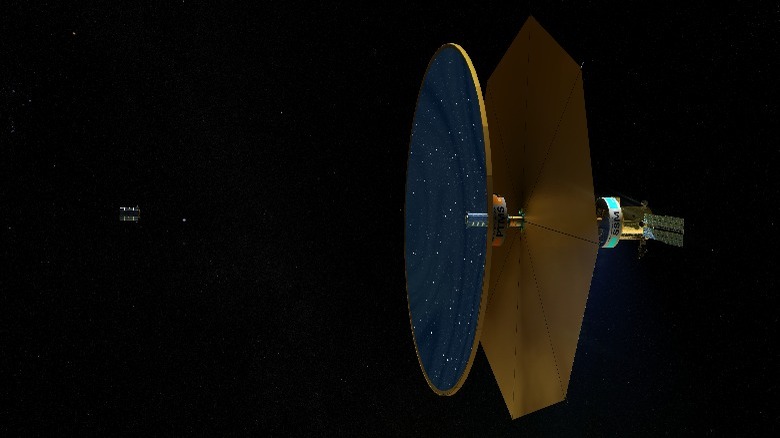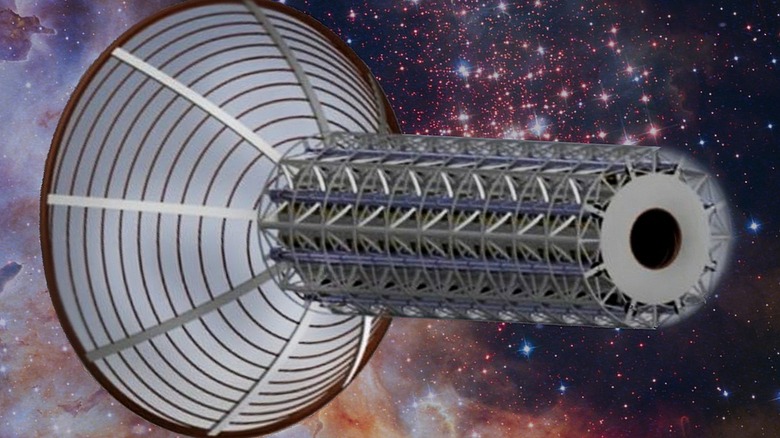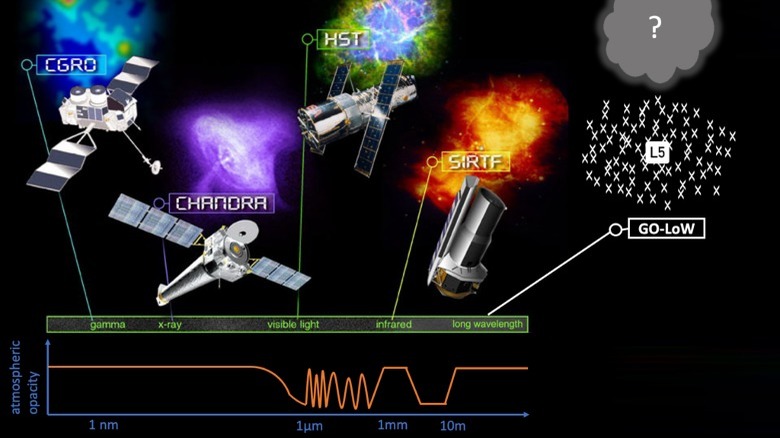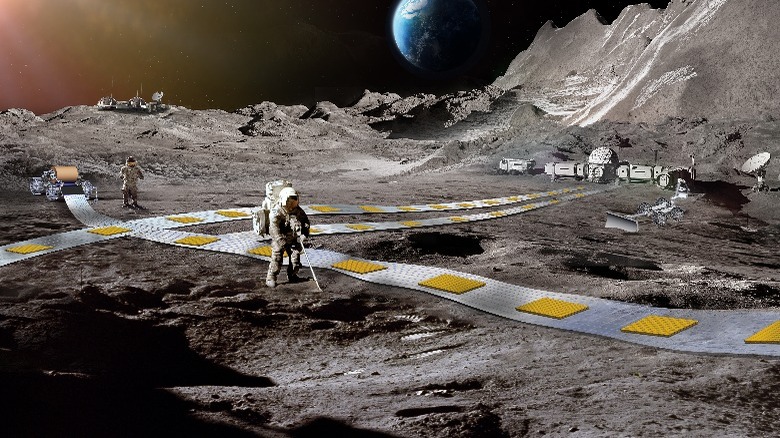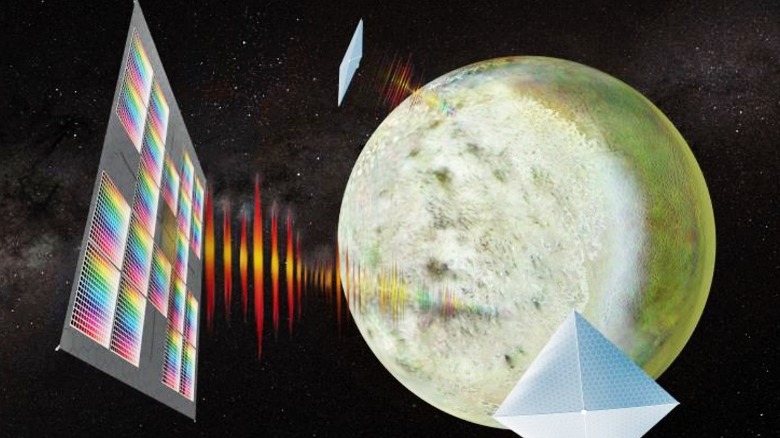6 Innovative New Technologies NASA Is Exploring
The National Aeronautics and Space Administration (NASA) is funding further study of six radically new technologies that could transform its future missions. Such projects include new types of space telescopes, propulsion tech, and even a lunar railway system. NASA has for some time invested in ingenious new third-party technologies, from citizen science projects all the way to work by scientific organizations. With the NASA Innovative Advanced Concepts (NIAC) program, funded by the Space Technology Mission Directorate (STMD), the space agency aims to encourage groundbreaking tech that could revolutionize future NASA missions. In early May 2024 the U.S. space agency selected six studies as the winners of its 2024 NIAC Phase II awards, and stated it will provide them additional development funding – up to $600,000 over two years — to solve any further budget and technical issues. Once Phase II is complete, successful studies may be greenlit to the final phase, giving them the chance to become an actual NASA mission.
NASA states these NIAC breakthroughs could either be better versions of previous aerospace concepts, or brand new ideas. Its hope with the NIAC program is to partner with entrepreneurs and innovators from the U.S. to build new technology, looking outside the sphere of established aerospace names. NIAC's ambition is to support early stage space research, with a scope ranging from advanced propulsion and robotics to deep space human exploration. Let's take a closer look at the six 2024 NIAC Phase II concept studies.
The Fluidic Telescope (FLUTE)
The FLUTE study is developing a fluidic space telescope concept that will have several advantages over traditional solid mirror telescopes. Led by Edward Balaban at NASA's Ames Research Center, FLUTE envisions the use of fluidic shaping of ionic liquids to create massive mirrors. The fluidic telescope could help NASA observe its top-priority targets , Balaban says, all of which happen to be exceedingly faint, and include such celestial objects as young galaxies, Earth-like exoplanets, and even first-generation stars. Building larger telescopes is the conventional manner by which scientists would finally see such indistinct interests in space, but traditional solid mirror telescopes with aperture diameters larger than 10 metres don't appear to be economically viable.
Thus, with the FLUTE concept, the study's ambition is to create a cost-effective space telescope design that could view the targets. Balaban explains that FLUTE envisions the use of a large aperture, unsegmented liquid primary mirror, built with fluidic shaping in microgravity — technology that has been tested in a variety of environments. The technique is said to be theoretically scale-invariant, and capable of producing sub-nanometer surface quality optical components.
Despite such technology being scale-invariant, Balaban states, "In order to make the concept feasible to implement in the next 15-20 years with near-term technologies and realistic cost, we limit the diameter of the primary mirror to 50 meters." To put that into perspective, the largest space-based telescope to date — the James Webb Space Telescope — has a 6.5-metre-wide primary mirror. With the stunning imagery the James Webb telescope has already shown us, we can't help but be excited about FLUTE.
A Pulsed Plasma Rocket (PPR)
The Pulsed Plasma Rocket (PPR) study is aimed at developing a new type of rocket with better thrust and carrying capacity. Led by Brianna Clements at Howe Industries, the study envisions fast manned transits to Mars by utilizing a propulsion system based on thrust from packets of plasma – created by nuclear fission. Such a system could provide both high amounts of thrust (up to 100,000 Newtons), and a large specific impulse (up to 5,000 seconds), to reduce the time of transit in intra-solar voyages. The technology could potentially bring down the travel time of manned missions to Mars to as brief as two months.
Anticipated to usher in a new era of space exploration, Clements claims, the Pulsed Plasma Rocket tech is based on the Pulsed Fission Fusion concept, but a "smaller, simpler, and more affordable" version. The PPR tech will be capable of powering heavy, cosmic ray shielded manned spacecraft for far-range missions, including to the Asteroid Belt, or even as far as the solar gravitational lens at 550 Astronomical Units (AU), Clements says.
"The NIAC Phase I study focused on a large, heavily shielded ship to transport humans and cargo to Mars for the development of a Martian base," said Clements, with spacecraft, power systems, and other subsystems design work key priorities, among other assessments. The second phase will seek to build on these areas and develop the PPR concept.
The Great Observatory for Long Wavelengths (GO-LoW)
The GO-LoW study, led by Mary Knapp at MIT, is aimed at developing a mega-constellation low-frequency radio telescope that can measure magnetic fields emitted by objects such as exoplanets as well as background data from the cosmic dark ages. Its design utilizes thousands of autonomous SmallSats. If commissioned, GO-LoW could be the first telescope to be able to observe the low-frequency spectrum, since its proposed location in space will help avoid ionospheric interference, and its novel multi-satellite design will enable long wavelength (meter-to-kilometer) detection to circumvent the traditional feasibility problems involved in radio telescopes.
Knapp explains that the constellation design sidesteps the problems associated with traditional large single space telescopes, mainly the multiple possible points of failure. The Great Observatory for Long Wavelengths will instead use a constellation of thousands of identical SmallSat satellites at an Earth-Sun Lagrange point. Knapp uses L5 as an example, which is roughly 30 million kilometres away from Earth. Here, satellites will be resistant to gravitational perturbations.
The GO-LoW study envisages an interferometric array of thousands of satellites to form a virtual radio telescope, with the majority of the satellites listener nodes (LNs), while the remainder will be communication and computation nodes (CCNs), forming a hybrid constellation network. The CCNs will transmit the data to Earth via lasercomm, and also be responsible for managing the network. Knapp noted that Phase I of the study showed the individual elements are feasible with the current state of the art, but to develop the virtual telescope at scale will take further study in Phase II.
A Radioisotope Thermoradiative Cell Power Generator
The Radioisotope Thermoradiative Cell Power Generator study, led by Stephen Polly at the Rochester Institute of Technology, is aimed at developing new in-space power sources for small exploration and science spacecraft. These power sources are envisaged to operate at higher efficiencies than older NASA power systems. The concept of a thermoradiative cell (TRC) is meant to be like a solar cell in reverse. Polly explains, that the TRC converts heat from a radioisotope into infrared light, and transmits it into cold space, generating electricity in the process.
The study's goal is to develop a multi-mission radioisotope thermoelectric generator (MMRTG) that has a "25x improvement in mass specific power and a four order of magnitude decrease in volume" compared to heritage designs. One of the ways the study aims to achieve this is by using low-bandgap III-V materials in "nanostructured arrays to limit potential loss mechanisms," Polly says. With such efficiencies, the technology could "enable small-sat missions to the outer planets as well as operations in permanent shadow such as polar lunar craters."
In Phase II of the study, the Radioisotope Thermoradiative Cell Power Generator study will assess the feasibility of a TRC for a CubeSat mission operating at Uranus. The team will also collaborate with the Compass engineering team at NASA, for their "expertise on the impact of new technologies on spacecraft design in the context of an overall mission, incorporating all engineering disciplines and combining them at a system level." The final step of Phase II will be to develop a roadmap for the necessary components required for future missions.
Flexible Levitation on a Track (FLOAT)
The FLOAT study is aimed at developing a robotic lunar railway system. Led by Ethan Schaler at NASA's Jet Propulsion Laboratory, the study's ambition is to provide reliable payload transport on the Moon's surface, where it envisages a durable, flexible levitation on track rail system that will support the day-to-day operations of a sustainable lunar base in the near future — the 2030s. Schaler notes that the concept is based on "NASA's Moon to Mars plan and mission concepts like the Robotic Lunar Surface Operations 2 (RLSO2)."
The mechanism envisioned by the FLOAT study is to utilize robots that are unpowered and magnetically levitate over a three-layer flexible film track that is unrolled directly onto the lunar surface, so as not to require any construction. The track is composed of one layer of graphite for diamagnetic levitation, a flex-circuit layer for electromagnetic thrust, and optionally, a thin-film solar panel layer to generate electricity for the base. By using this passive floating method, the team hopes to minimize dust abrasion common in robots with moving parts.
With individual robots anticipated to be able to carry payloads over 30 kilograms per square meter at speeds over half a meter per second, the FLOAT system could potentially transport up to 100,000 kilograms per day. The roll-on, roll-up design of the FLOAT system would also enable easy reconfiguration of the track to match what would be frequently-changing lunar base needs. Phase II of the study plans to minimize the risks related to the "manufacture, deployment, control, and long-term operation of meter-scale robots and kilometer-scale tracks."
ScienceCraft for Outer Planet Exploration (SCOPE)
The SCOPE study is about a new type of spacecraft with imagers on its solar sails, conventionally used simply for propulsion. Led by Mahmooda Sultana at NASA's Goddard Space Flight Center, SCOPE plans to embed quantum dot-based sensors on the sail. The design enables cheaper and lighter spacecraft for observation missions in the solar system, Sultana says. The term ScienceCraft is a portmanteau of the terms "science instrument" and "spacecraft," signifying a literal combination of the two into a single craft that's claimed to be ideal to study the outer solar system, with Sultana highlighting the outermost planets, Neptune and Uranus.
The ScienceCraft is envisioned to have an ultra-lightweight spectrometer printed directly onto its solar sail. This design is said to herald a radical new type of spacecraft that allows for "unprecedented parallelism and throughput of data collection and rapid travel across the solar system," Sultana adds. Rather than a solar sail that propels a small CubeSat, the ScienceCraft design would allow for the majority of the spacecraft to be used for spectroscopy. Sultana claims that such a concept would allow for lower cost missions to the outer planets and also provide multiple launch opportunities as a secondary payload on other missions.
A proposed mission for SCOPE is to study Neptune's moon Triton, examining its atmosphere and other features. Phase I of the SCOPE study saw the team perform feasibility tests for a Neptune-Triton mission, including the identification of the key technologies required for such a mission and the possible hurdles it could face. Phase II of the SCOPE study is aimed at further developing the mission concept, necessary technologies, and addressing challenges.

